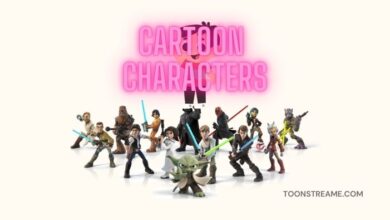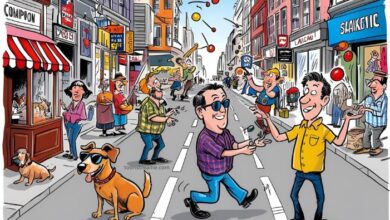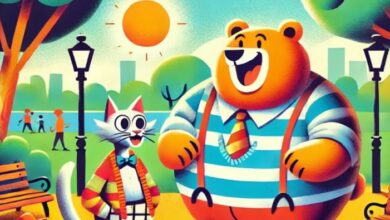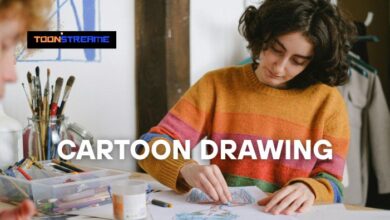National Cartoon: What It Means and Why It Matters
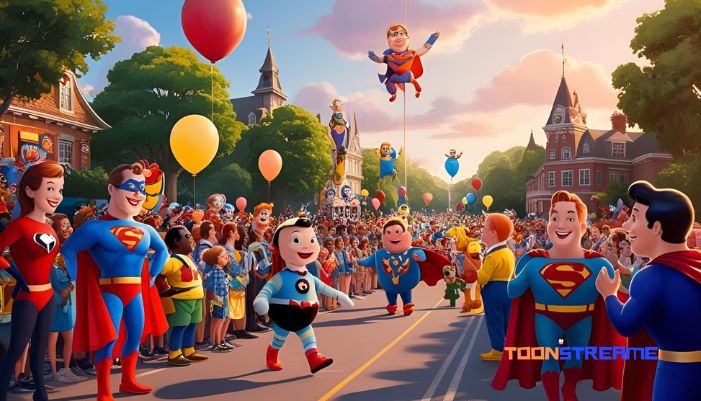
A national cartoon is more than just a funny drawing. It shows what people in a country think, feel, and care about. These cartoons often appear in newspapers, magazines, or online. Some are funny. Some make strong points about big topics like politics or society. Either way, they send a message—fast and clear.
Why National Cartoons Matter
National cartoons do a lot of things:
-
They tell stories in a fun way.
-
They talk about real problems.
-
They reflect culture and values.
-
They can make people laugh or think deeply.
Cartoons are powerful. A single image can say more than a full article.
A Quick Look at the History of National Cartoons
1. The Early Days
National cartoons started long ago. Back in the 1800s, artists drew cartoons to show what they thought about leaders and big news. These drawings helped everyday people understand what was going on.
One famous cartoonist was Thomas Nast. He used art to fight corruption and helped people learn about politics. His work helped shape what national cartoons look like today.
2. Cartoons in the 1900s
In the 20th century, cartoons exploded in popularity. Big names like Walt Disney created characters like Mickey Mouse. These weren’t just fun to watch. They became symbols of hope, fun, and national pride.
Other cartoon characters like Bugs Bunny, Donald Duck, and Scooby-Doo also became household names. These cartoons didn’t just entertain kids. They brought people together.
3. Cartoons in Today’s World
Today, national cartoons live online. You can find them in memes, short videos, and comic strips on social media. Some are made to make us laugh. Others speak up about serious issues—like war, climate change, or unfair laws.
Types of National Cartoons
National cartoons come in many forms. Here are a few common types:
Political Cartoons
These cartoons point out problems in government or politics. They use humor or exaggeration to make people think.
Editorial Cartoons
These appear in newspapers and news websites. They give the cartoonist’s opinion on a big issue—fast and clearly.
Animated Cartoons
These are short movies or shows. Some are made for kids, like “Dora the Explorer.” Others, like “The Simpsons,” are for adults too. They often show what life is like in that country.
Comic Strips
You’ll find these in newspapers or comic books. They tell short stories, often with ongoing characters.
How National Cartoons Shape Society
They Teach and Explain
Cartoons make hard ideas simple. Kids and adults both learn from them. A short cartoon can explain what’s happening in politics, economics, or health.
They Start Conversations
People share cartoons on social media. This spreads the message quickly. Many cartoons spark debates or bring attention to things people ignore.
They Hold Leaders Accountable
A cartoon can highlight a leader’s mistake in just one frame. That’s why cartoonists are sometimes targeted by people in power. They speak truth through art.
They Show What a Nation Cares About
Cartoons show us what makes people laugh, cry, or get angry. That tells us a lot about a country’s values and culture.
Real Experts Weigh In (Hypothetical Commentary)
Dr. Lisa Morgan, media scholar:
“Cartoons show us the soul of a country. They reveal what people care about, what makes them laugh, and what makes them angry.”
Adam Blake, cartoonist with 20+ years of experience:
“A national cartoon is more than art. It’s a voice. My drawings say things that words sometimes can’t.”
How Technology Changed National Cartoons
Faster Sharing
Before, cartoons were printed in papers. Now, they’re online. A cartoon can go viral in minutes.
Better Tools
Cartoonists now use tablets, software, and AI. This helps them create faster and share wider.
More Voices
In the past, only a few people could publish cartoons. Today, anyone with internet access can make and post one.
Common Questions About National Cartoons
What Makes a Cartoon “National”?
It’s about the message. A national cartoon deals with issues that affect a whole country. It shows the culture, mood, or beliefs of the people.
Are National Cartoons Only for Kids?
No. Many are for adults. Political cartoons, editorial cartoons, and satirical shows often target grown-up audiences.
Can Cartoons Change People’s Minds?
Yes. A powerful cartoon can make people see things differently. It can spark change, open dialogue, or lead to action.
Where Can I See National Cartoons?
-
News websites
-
Social media
-
YouTube
-
Online comic platforms
-
National newspapers and magazines
Quick Facts About National Cartoons (Great for Snippets)
-
📅 First known political cartoon: 1754 (“Join, or Die” by Benjamin Franklin)
-
🖌️ Most famous early cartoonist: Thomas Nast (1800s)
-
📺 Longest-running cartoon show: The Simpsons
-
🌍 Cartoons are used worldwide to teach, protest, and entertain
Tips for Understanding National Cartoons
-
Look at the details. Every part means something.
-
Think about the time it was made. What was happening then?
-
Ask what message it sends. Is it funny? Serious? A warning?
-
Check your feelings. Good cartoons make you feel something.
Conclusion
National cartoons are not just jokes or silly pictures. They tell the story of a country—its people, its leaders, its problems, and its hope. From funny comics to bold political art, cartoons shape how we think, speak, and act.
They help us learn. They help us laugh. And most importantly, they help us see the world through a different lens.
So next time you see a cartoon in a paper or online—pause. Look closely. You might learn something new.
Want to Remember This?
National cartoons = art + message + impact.
They are mirrors of society and windows into national identity.
FAQ Summary
| Question | Short Answer |
|---|---|
| What is a national cartoon? | A cartoon that reflects a country’s culture or politics. |
| Are they for adults too? | Yes. Many are meant for adult readers or viewers. |
| Can cartoons teach? | Yes. They simplify complex ideas for all ages. |
| Where to find them? | Online, in newspapers, and on social media. |


